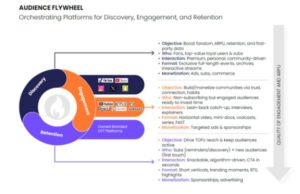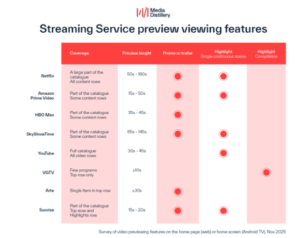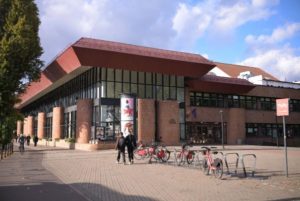Appear – How to be an immersive and green broadcaster

Matthew Williams-Neale, VP of Marketing, Appear
Delivering immersive live events, whether it’s the thrill of the Olympics’ 100-meter sprint or the suspense of an awards ceremony, while simultaneously meeting sustainability goals, is no easy feat. Broadcasters are rising to this challenge by leveraging cutting-edge technologies and innovative production methods. Today’s audiences expect nothing less than best-in-class coverage, and the recent summer of sports presented broadcasters with the dual challenge of delivering high-quality live content, while adhering to stringent sustainability standards.
ITV Sports’ coverage of Euro 2024 exemplifies this approach, with its adoption of a ‘reverse remote’ production workflow focused on sustainability. This setup included multiple remote galleries in Berlin for live shots, a centralized MCR for connectivity, and a remote gallery transmitting signals back to London. Similarly, the Paris Olympics set a goal to halve its emissions compared to previous games by integrating greener technologies and practices, such as electric vehicles, energy-efficient systems, and carbon credits. These shifts in broadcasting priorities underscore how major live events are increasingly embracing technological innovation to achieve carbon neutrality.
Embracing cloud-based technology
As we move further into 2024, broadcasters are increasingly turning to cloud-based solutions to boost operational efficiency and significantly cut carbon emissions. By reducing the need for physical infrastructure and on-site staff, these remote production platforms are leading the charge in minimizing the broadcast footprint. This shift not only lessens the need for on-site crews and equipment but also dramatically cuts the energy consumption typically associated with large-scale live events. Embracing flexible, high-density solutions that support low-latency coverage allows broadcasters to deliver superior content while simultaneously advancing sustainability efforts.
Sustainable practices are also targeting waste reduction and resource optimization, from using eco-friendly materials to optimizing energy consumption and pursuing zero-waste goals through recycling initiatives. For instance, the Paris Olympics adopted cloud-based technology to lower the event’s carbon footprint and reduce power requirements. Olympic Broadcast Services (OBS) has highlighted that cloud solutions enable them to “do more with less,” showcasing the value of efficient technologies and strategic partnerships in broadcasting. Cloud-based solutions are increasingly understood to be pivotal in reducing the broadcast footprint and energy demands, enabling broadcasters to deliver the excitement of live sports in an environmentally responsible way.
Innovative solutions for high-quality, sustainable broadcasting
Technology solution providers like Appear are at the forefront of transforming the broadcasting landscape by developing sustainable technologies. These advances not only reduce the environmental impact of media production, distribution, and consumption but also allow broadcasters to offer compelling new viewing experiences that bring audiences closer to the action.
In an industry traditionally associated with high carbon emissions, broadcasters are increasingly adopting high-density solutions to produce high-quality live content. Appear’s advanced live production solutions, such as the X Platform, have been employed in most of this summer’s major international sporting events due to their spatial density, functional versatility, and power efficiency. This technology is crucial in ensuring that live feeds from sports venues are sustainably delivered to broadcasting hubs with minimal latency and high quality.
The X Platform offers high-capacity video processing, supporting multiple formats and resolutions required for a diverse range of live events. These solutions minimize rack space in OB trucks and production control rooms, reduce on-site power consumption, and simplify shipping logistics. By embracing innovative technology, broadcasters set a new gold standard for the industry while ensuring that fans can enjoy live events sustainably.
The importance of transparency and collaboration
Transparency and collaboration are essential for advancing sustainability within the media and broadcast industry. Leading companies are making bold climate pledges, emphasizing transparency, energy efficiency, and the reduction of operational impact. As the industry confronts environmental challenges, setting ambitious targets for lowering carbon footprints and increasing renewable energy use is imperative. Given the media’s influence on public perception, integrating sustainable practices has the potential to inspire broader societal shifts towards greener lifestyles.
Collaboration among broadcasters, technology providers, and environmental groups is key to establishing industry-wide standards and best practices. Companies that welcome third-party scrutiny and maintain transparency lay the foundation for continuous improvement. Incorporating these principles allows firms to effectively utilize innovation and engineering expertise, positioning themselves as leaders in the drive toward a more sustainable future.
As the media and broadcast industry strives to balance delivering exceptional viewer experiences with achieving sustainability goals, embracing innovation and collaboration is crucial. Advanced technologies like cloud-based solutions and high-density production systems are instrumental in reducing carbon footprints and optimizing resource use. By working together, broadcasters, technology providers, and environmental groups can establish and adhere to standards that support both outstanding content and environmental responsibility. This approach not only ensures engaging live events but also contributes to a more sustainable future.









